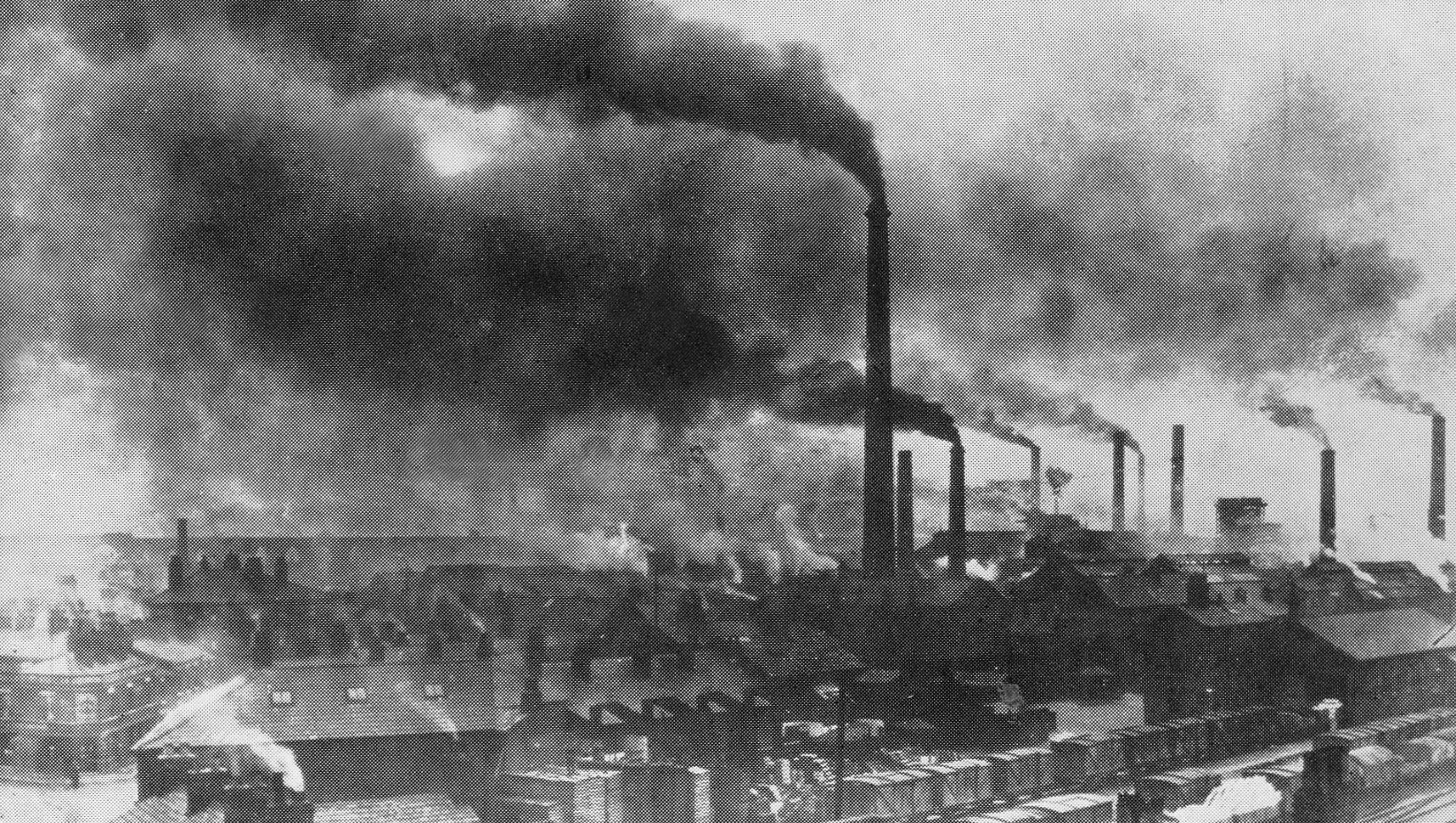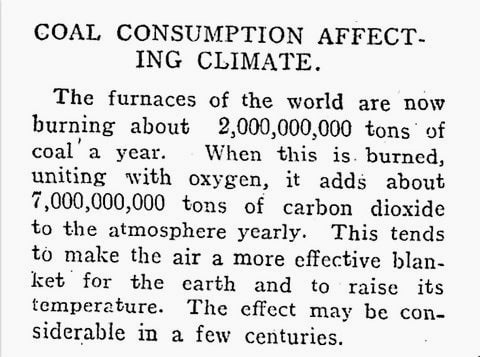A 1912 news article ominously forecasted the catastrophic effects of fossil fuels on climate change
A short news clip from a New Zealand paper published in 1912 has gone viral as an example of an early news story to make the connection between burning fossil fuels and climate change.


A short news clip from a New Zealand paper published in 1912 has gone viral as an example of an early news story to make the connection between burning fossil fuels and climate change.

It wasn’t, however, the first article to suggest that our love for coal was wreaking destruction on our environment that would lead to climate change. The theory—now widely accepted as scientific reality—was mentioned in the news media as early as 1883, and was discussed in scientific circles much earlier than that.
The French physicist Joseph Fourier had made the observation in 1824 that the composition of the atmosphere is likely to affect the climate. But Svante Arrhenius’s 1896 study titled, “On the influence of carbonic acid in the air upon the temperature on the ground” was the first to quantify how carbon dioxide (or anhydrous carbonic acid, by another name) affects global temperature. Though the study does not explicitly say that the burning of fossil fuels would cause global warming, there were scientists before him who had made such a forecast.
The earliest such mention that Quartz could find was in the journal Nature in December of 1882. The author HA Phillips writes:
According to Prof Tyndall’s research, hydrogen, marsh gas, and ethylene have the property to a very high degree of absorbing and radiating heat, and so much that a very small proportion, of say one thousandth part, had very great effect. From this we may conclude that the increasing pollution of the atmosphere will have a marked influence on the climate of the world.
Phillips was relying on the work of John Tyndall, who in the 1860s had shown how various gases in the atmosphere absorb heat from the sun in the form of infrared radiation. Now we know that Phillips was wrong about a few scientific details: He ignored carbon dioxide from burning coal and focused more on the by-products of mining. Still, he was drawing the right conclusion about what our demand for fossil fuels might do to the climate.
Newspapers around the world took those words published in a prestigious scientific journal quite seriously. In January 1883, the New York Times published a lengthy article based on Phillips’ letter to Nature, which said:
The writer who has partially discussed the subject in the columns of Nature has fixed upon 1900 as the date when the earth’s atmosphere will become entirely irrespirable. This is probably a misprint, for unless the consumption of cigarettes increases unlooked-for rapidly the atmosphere ought to remain respirable until 1910, or even 1912. At the latter date all mankind will have perished, and nothing except the hardier plants will be living on the surface of the earth.
Let’s hope the author of that New York Times article was extant in 1912 to breathe a sigh of relief that such a doomsday hadn’t come to pass. That 1883 article did end up achieving something important though: It made the conversation about the effect of pollution a lot more common.
Jeff Nichols, a historian at the University of Illinois at Chicago, believes the source of the New Zealand news story making the rounds on the internet is an article published in Popular Mechanics in March 1912. Beyond quoting the exact same numbers, its author Francis Molena goes on to say:
A theory has been elaborated, primarily by the great Swedish scientist Arrhenius, that the earth has had a warm climate when the amount of carbon dioxide in the air was abundant, and a cold climate when it was scarce.
Nichols found many examples between 1883 and 1912, where newspapers, including the Philadelphia Inquirer, Kansas City Star, and York Daily, wrote articles about what rising carbon dioxide levels would do the climate.
All through the 19th century, the increasing use of coal was hard to miss. Towns and cities across the world were becoming noticeably polluted because of factories, and later steam trains. In this light, it’s not surprising that a tiny New Zealand newspaper carried an article in 1912 about how the ever-increasing use of fossil fuels might change Earth’s climate.